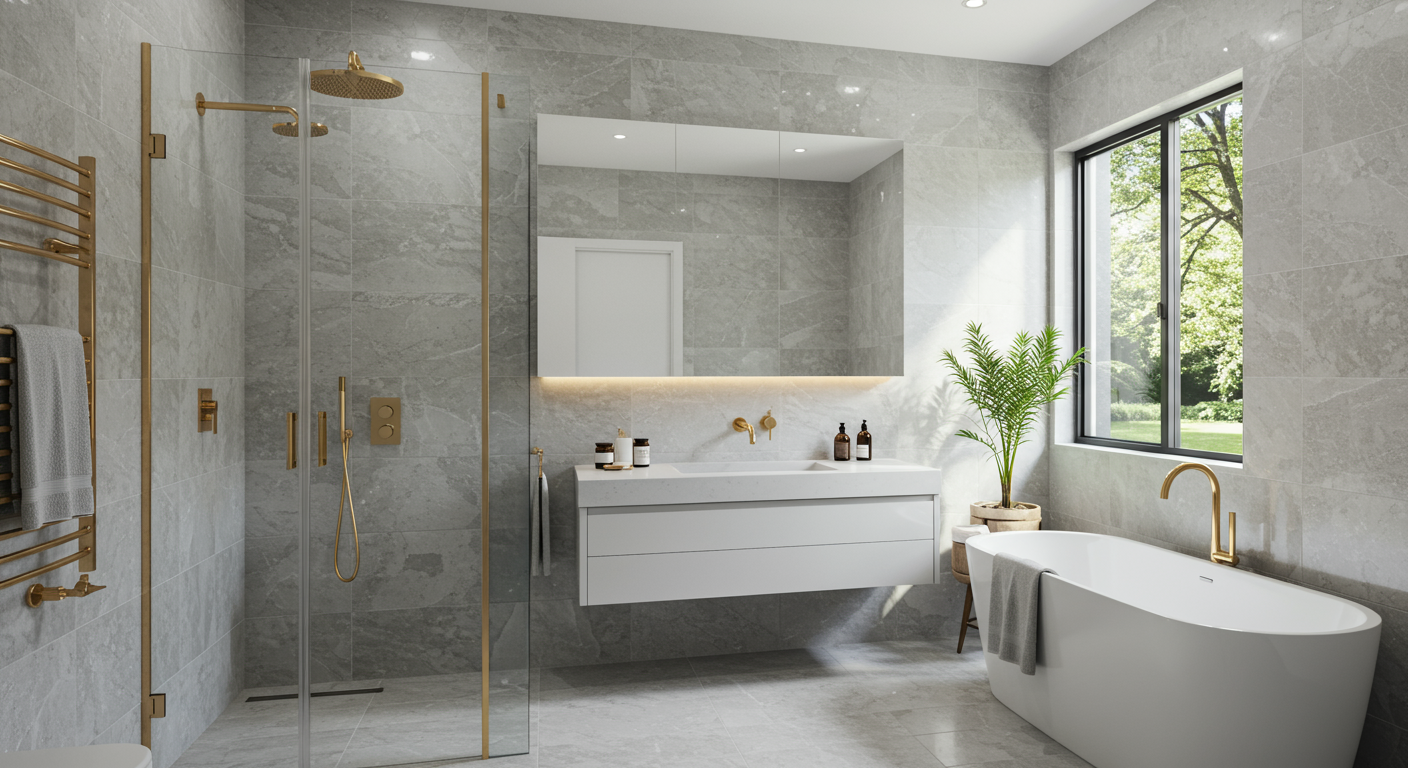
Imagine a bathroom that works seamlessly for everyone, regardless of age, ability, or temporary limitations. That’s the heart of universal design. When we talk about Bathroom accessibility, we’re not just solving for today—we’re future‑proofing your home. Whether you’re planning to age in place, doing a full remodel, or simply upgrading safety, thoughtful choices turn a standard bath into a space that’s comfortable, functional, and beautiful for all.
Many people think “accessible” means only for specific disabilities, but these features help everyone—a parent holding a child, someone recovering from an injury, or an older adult seeking independence. With the right Bathroom planning, you can make daily routines smoother and safer for every user.
1. Wider Bathroom Doors and Clear Pathways
The first step to true accessibility starts at the entrance. Standard doors can be a hassle for wheelchairs, walkers, or even a laundry basket. Aim for 34–36 inches of clear width to make passing through easy. Inside the Bathroom, maintain a 60-inch turning radius where possible and arrange fixtures to avoid bottlenecks. Space‑saving pocket doors or barn doors eliminate swing clearance and make a wheelchair‑friendly layout far easier to achieve.
2. Curbless Showers (Zero-Entry or Roll-In Showers)

Few upgrades impact accessibility like a curbless shower. Also called zero‑entry or roll‑in, it removes trip hazards and allows seamless entry for mobility devices. The pan uses a gentle slope to the drain to keep water contained without a threshold. Pair it with a sturdy shower bench and well‑placed grab bars for a safer, more confident Bathroom experience.
3. Strategically Placed Grab Bars

Modern grab bars don’t have to look clinical—sleek finishes blend right in. What matters most is proper installation: mount into studs or blocking so they can support real weight. Key locations include inside the shower or tub, beside the toilet, and near shower entry/exit points. Solid bars support balance, standing, and safe transfers, making the Bathroom more secure for all ages.
4. Comfort Height Toilets
A small change that makes a big difference. Comfort height toilets sit roughly 17 to 19 inches from floor to seat—similar to a chair—so it’s easier to sit and stand. Many ADA guidelines align with these dimensions. If you’re not replacing the toilet, a sturdy raised seat can offer a budget‑friendly boost in comfort and accessibility.
5. Accessible Vanities and Sinks
Traditional vanities can block access for wheelchair users. Choose an open‑base design or wall‑mounted sink with knee and toe clearance so users can roll in close. Shallow bowls and offset drains maximize space beneath. Set counter height around 30–34 inches to suit seated and standing users, and swap to lever handles for easy operation with limited grip.
6. Non-Slip Bathroom Flooring
Falls are the most common Bathroom injury—and wet floors are often to blame. Prioritize non‑slip surfaces like textured porcelain or ceramic with a higher COF, matte tiles, or slip‑resistant vinyl. Skip glossy finishes that get slick when wet. Better slip resistance means safer footing for everyone, especially in homes with older adults.
7. Accessible Bathtubs (Walk-In Tubs)

If soaking is a must, a walk‑in tub offers a safer alternative. Look for a low‑threshold door, built‑in seat, non‑slip surfaces, and integrated grab bars. Many models add therapeutic features for comfort and recovery. While installation is more involved, a walk‑in tub can be a smart centerpiece for an aging‑in‑place Bathroom.
8. Lever Handle Faucets and Easy-to-Use Controls
Twisting small knobs can be tough with arthritis, limited dexterity, or soapy hands. Lever handles and easy‑touch controls reduce effort and improve safety. Consider thermostatic shower valves to lock in temperature and avoid scalds, and add touchless faucets for extra convenience and hygiene in a busy Bathroom.
9. Thoughtful Lighting and Electrical Outlets
Good lighting is safety. Layer ambient lighting with bright, glare‑free task lights at the vanity and add night lights for safe paths after dark. Use rocker switches at accessible heights (around 48 inches) and mount outlets higher to reduce bending. Smart Bathroom lighting choices lower fall risk and make grooming and medication tasks easier.
10. Smart Storage Solutions and Clear Pathways
Clutter creates hazards. Plan storage that keeps essentials within easy reach without narrowing walkways. Think recessed niches, pull‑out drawers, and shallow cabinets that don’t invade clear floor space. Adjustable shelves adapt to different users. Organized storage supports a tidy, functional Bathroom that’s safer for everyone.
Beyond the Features: Embracing Accessible Bathroom Remodeling
This isn’t just about compliance—it’s about comfort, safety, and independence. Whether you take on a full Bathroom remodel or make strategic updates, universal design pays off daily. Thoughtful choices let the space flex with changing needs over time.
Conclusion
A truly accessible Bathroom blends beauty with usability. By integrating these universal features—like a curbless shower, grab bars, comfort height fixtures, and smart lighting—you create a room that works better for everyone, now and in the future. Prioritize safety, clarity of movement, and ease of use in your next Bathroom renovation, and you’ll build a space that’s inclusive, dignified, and built to last.


